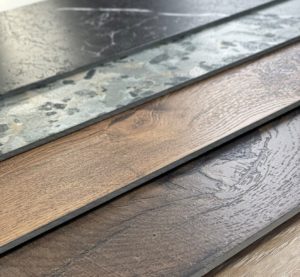 Hamont, Belgium–According to i4F, a group of companies providing patents and technologies to the flooring industry, CFL Flooring acquired a Hymmen Jupiter digital printing line for its U.S. facility and has signed a new digital printing technologies license agreement with i4F. This reinforces CFL’s long-term digital printing strategy as well as the company’s commitment to innovation “firsts” whilst reducing its carbon footprint, according to the company. CFL’s next-generation rigid core produces will be produced using Hymmen’s Jupiter JPT-C print-to-board line.
Hamont, Belgium–According to i4F, a group of companies providing patents and technologies to the flooring industry, CFL Flooring acquired a Hymmen Jupiter digital printing line for its U.S. facility and has signed a new digital printing technologies license agreement with i4F. This reinforces CFL’s long-term digital printing strategy as well as the company’s commitment to innovation “firsts” whilst reducing its carbon footprint, according to the company. CFL’s next-generation rigid core produces will be produced using Hymmen’s Jupiter JPT-C print-to-board line.
With 4,500 employees, CFL Flooring is a global leader and innovator in rigid core manufacturing as well as other hybrid vinyl floor covering solutions. Over the last 18 months, the company has heavily invested in its state-of-the-art production facility in Calhoun, Ga., that is now fully operational, according to the company. The new Jupiter digital printing line will be located in Calhoun and be used to produce CFL’s next-generation rigid core lines.
In addition to the multiple design and production advantages, CFL said its decision to buy the digital printing line was driven by its goal to reduce its carbon footprint as well as to become more sustainable. Digital printing eliminates the need for certain elements, thus reducing the total amount of PVC use, reducing plastic waste, as well as reducing the impact of supply chain strains linked to production.
Designed to enable 24/7 industrial production, Hymmen’s Jupiter JPT-C print-to-board lines deliver intelligent and highly precise register accuracy, according to the company. This ensures the highest levels of color stability and print quality output while maintaining printing speeds of 25-50 meters per minute.
i4F licenses the world’s most advanced digital printing technologies and offers exclusive access to all Hymmen digital printing technologies in the flooring sector. Digital printing will play a crucial role in the future of new material flooring as it enables unlimited design and embossing-in-register flexibility and can be applied to a wide range of materials, according to the company. This facilitates faster response times to market demands and trends while reducing material waste.
